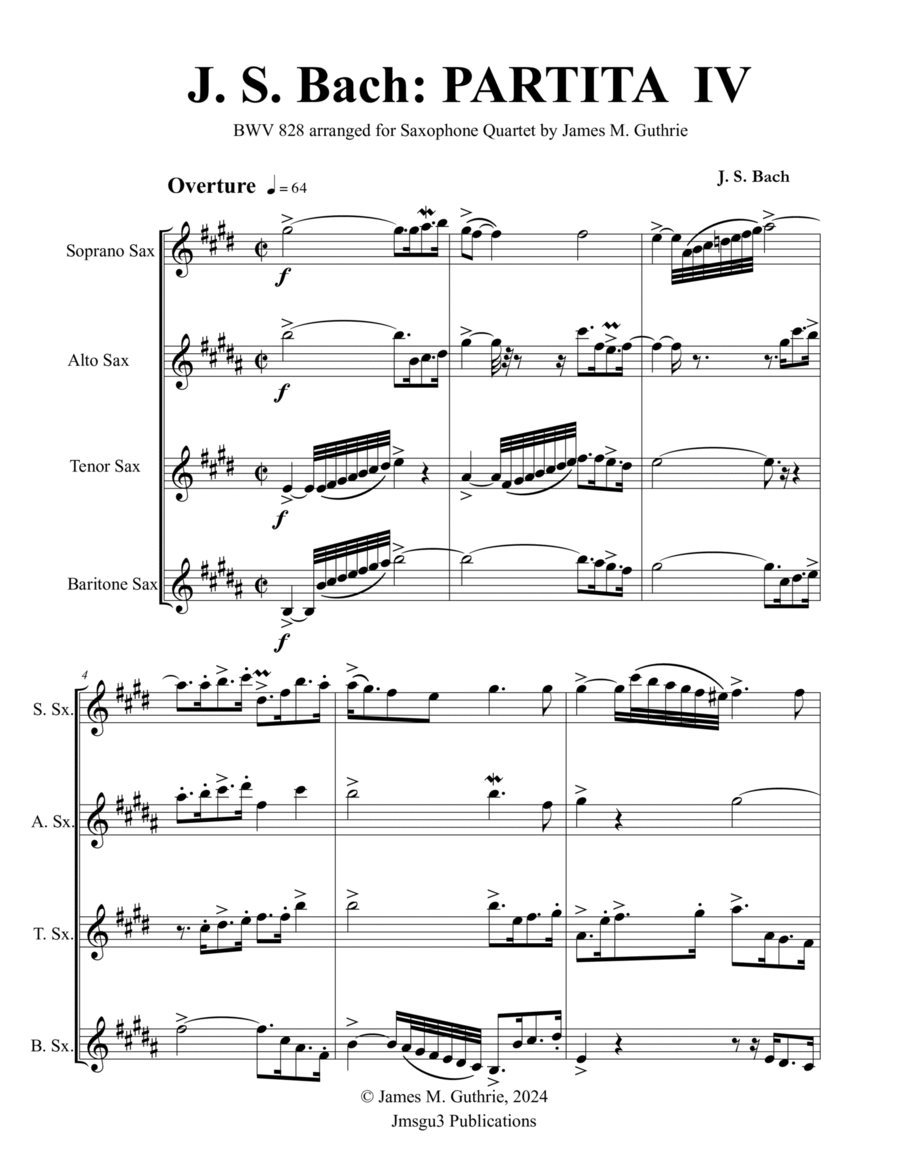Saxophone Quartet,Woodwind Ensemble Alto Saxophone,Baritone Saxophone,Soprano Saxophone,Tenor Saxophone - Level 4 - Digital Download SKU: A0.1433420 Composed by Johann Sebastian Bach. Arranged by James M. Guthrie. Baroque,Chamber,Contest,Festival,Historic,Standards. 107 pages. Jmsgu3 #1013671. Published by jmsgu3 (A0.1433420). BACH: Partita No. 4 BWV 828 Contents: Overture, Allemande, Courante, Aria, Sarabande, Menuet, Gigue. Bach's Partita No. 4 in D major, BWV 828, is an essential work for several reasons: It is part of Bach's Clavier-Übung I, a collection of keyboard suites that he published in the last 25 years of his life as a musical testament to convey his vision of music-making and composing. Unlike his earlier English and French suites, the partitas in this collection are more severe, focusing on polyphonic structures that actively involve both the listener and performer. The partita consists of seven movements, all in the key of D major, structured around Renaissance dance forms such as the allemande, courante, sarabande, minuet, and gigue. This instrumentation captures both the original medium for these dance sets as well as the Baroque style of Bach. Bach was well aware of his abilities as a composer, and he deliberately published these works to ensure they would not be lost to future generations. The partitas represent Bach's mature approach to keyboard composition, where he was less interested in dance rhythms and more focused on creating complex polyphonic structures. Overall, Partita No. 4 is considered an essential work in Bach's keyboard oeuvre, as it showcases his mastery of form and counterpoint while also reflecting his desire to create music that would endure.
